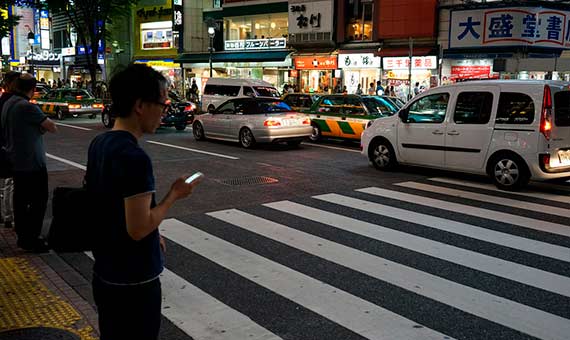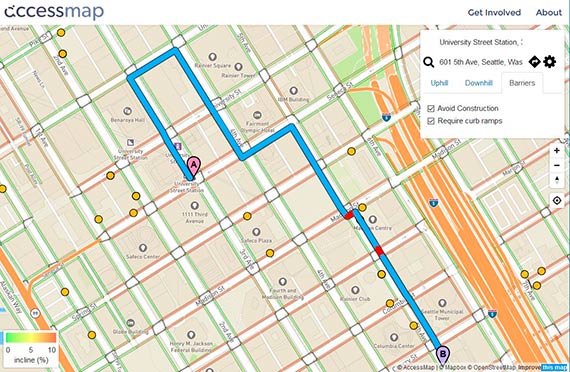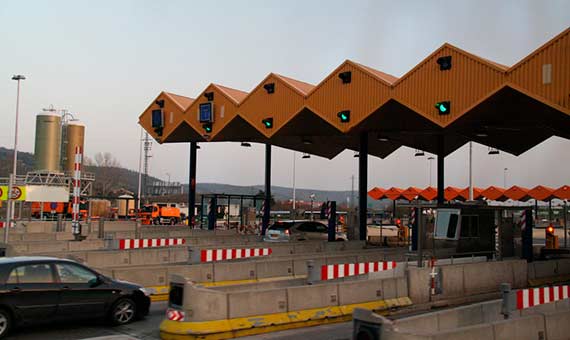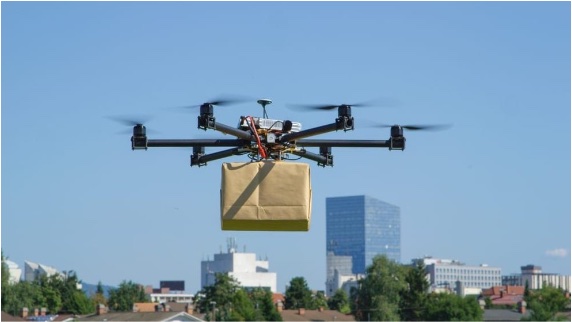The self-driving vehicle, in which the driver is almost unnecessary, is today a technical reality that promises to revolutionise the concept of mobility. But the fact is that these vehicles have been promised for years without ever materialising, not only because of their high cost, but also and to a large extent because of the regulatory barriers that will take time to come down. Until the day arrives when our cars can drive themselves, other technologies are already making it easier for us to get around.
Robots that can regulate traffic, algorithms that detect people so as to avoid accidents, and crosswalks that alert smartphone-distracted pedestrians are just three examples of technologies that are already adapting to our movements.
A robot among pedestrians
Both drivers and pedestrians need to know the rules when driving in cities, but what about robots? Engineers at the Massachusetts Institute of Technology (MIT) have designed an autonomous device that is able to keep pace with foot traffic and observe the general codes of pedestrian conduct.
In a campus building, the robot was able to move at a human pace (1.2 metres per second) for more than 20 minutes. Equipped with sensors and a webcam, the device uses algorithms to map the environment and determine its position. To control it, engineers have used the same methods as driverless land vehicles.
This little robot is able to move surrounded by people and avoiding collisions. Credit: MIT
The researchers envisage its use on city sidewalks to deliver packages or orders, but also to transport people in pedestrian areas such as shopping centres, hospitals or airports. They also propose that it could be used to regulate the flow of people or cars. For example, if a green or red light were built in, it would be like a much more advanced traffic light. “Some of the same principles would apply, such as avoiding collisions and the robot balancing its objectives (controlling traffic, or getting to a goal location) with the surrounding peoples’ intents (where they want to go),” Michael Everett, one of the engineers involved in its design, told OpenMind. Recently, the researchers have incorporated a new and improved collision avoidance algorithm that more deftly navigates traffic and reduces the time to reach the destination.
The algorithm that detects people
In big cities, pedestrians are often struck by vehicles, either due to lack of visibility on the part of the driver, carelessness or negligence of the person crossing the road. Such accidents could be avoided thanks to pedestrian detection algorithms being developed by numerous research groups.
At the University of California, San Diego (USA), the Visual Statistical Computing lab led by Nuno Vasconcelos is one such group. Vasconcelos and his collaborators have developed a tool that performs near real-time detection with greater speed and accuracy. This technology, which incorporates deep learning models (trained on thousands of images), could be used in smart vehicles, robotics, and image and video search systems.
“We just work on the detection itself. It would be up to the car manufacturer to decide what to do with it, although it could be implemented in a computer,” Vasconcelos told OpenMind. Researchers continue to improve their systems to improve accuracy and detection speed. However, while some car manufacturers already offer this option, a recent review points out that there is still a huge gap between these tools and human perception. According to the authors, “there are still a lot of problems, and there remains a lot of room for research,” especially for real-time detection.
Crosswalks modified for smartphone zombies
Walking with our eyes glued to our smartphone has its risks, especially if we have to cross a road. People have come to be known as “smartphone zombies” or “smombies” when they cross the road with their eyes on their phone rather than on the traffic, risking being struck by a car. In some cities, such as Sydney, Seoul, Tel Aviv and Singapore, among others, crosswalks have been installed with coloured light strips embedded in the ground at the points where pedestrians begin crossing. When the traffic light turns red or green, the lights on the ground also illuminate in the same colour, drawing the attention of people fixated on their screens.

These lights can be oriented towards drivers, especially if the crosswalk lacks traffic lights and is not clearly visible. With yellow flashing lights around it, drivers are warned from a distance that they have to slow down. Another option that has been implemented in the Chinese city of Chongqing is to designate exclusive lanes for people who use their smartphones while walking. Other systems use vibrating platforms to warn pedestrians when not to cross, or send alerts to their mobile phones. While there are many such initiatives, some experts criticise them for rewarding bad pedestrian behaviour.
The most accessible route
Getting around with a shopping cart, a baby carriage or a wheelchair is often not an easy task. When these people calculate the route to go somewhere, the usual navigation apps do not inform them if the sidewalk curbs are navigable or if a street is particularly steep.

The AccessMap tool, designed by researchers at the Taskar Center for Accessible Technology at the University of Washington (USA), addresses all these problems and offers customisable routes for the inhabitants of Seattle. First, they have to indicate their preferences, i.e. how steep an incline they can handle or whether they need curb cuts, for example.
“In the usual routing, algorithms penalise for distance because they are looking for the shortest path,” Anat Caspi, director of the Taskar Center, tells OpenMind. In the case of AccessMap, the algorithm does not choose the shortest route, but the one that takes into account the user’s preferences. Other navigation tools such as OpenStreetMap or Google Maps are also progressively introducing accessibility options to facilitate the movement of users with mobility difficulties.
Tolls with automatic payment
On many roads it is still necessary to stop at a toll booth to pay on the spot for the use of the road, which creates annoying traffic bottlenecks. This is why more and more places are introducing automatic toll systems to improve traffic flow.

Most of these systems use a reader installed in the road that sends a radio signal to a transponder in the vehicle, identifying it and collecting the payment electronically by the previously established method. In some cases, such as in central London, cameras are used to read license plates. The user must be registered in the system to make the payment.
Some European countries have already implemented automatic tolling systems based on satellite navigation devices in the cars themselves, which record the user’s journey and trigger the request for payment. The advantage of this option is that it not only eliminates the need for toll booths, but also avoids the installation of costly camera and sensor infrastructure on roads.
AERIAL DELIVERY VEHICLES
In a world that is increasingly connected and hooked on online commerce, parcel delivery has taken on such proportions that it requires a huge and continuous movement of vehicles. In 2013, Amazon announced that over the next five years it would fill the skies with a fleet of drones capable of delivering parcels to users’ homes within 30 minutes. The initiative was met with some scepticism, and the reality is that flying delivery still does not yet seem to have taken off.

The idea has encountered serious obstacles along the way, including technical and safety challenges, not to mention a few drone crashes. But this does not mean that aerial delivery is dead. In fact, according to McKinsey & Company, the industry is alive and growing: more than 660,000 commercial drone deliveries have been made in the past three years, and 2,000 packages are being sent by aerial delivery each day worldwide. In 2022, the consultancy estimates there will be 1.5 million air deliveries, three times more than the previous year. In addition to Amazon, companies such as Domino’s—which in 2016 delivered its first pizza by drone in New Zealand—UPS, Alphabet (Google’s parent company), FedEx, Walgreens and Walmart are all investing in drone delivery services, although the regulatory barriers are significant.
Laura Chaparro / Javier Yanes
@laura_chaparro / @yanes68
Comments on this publication